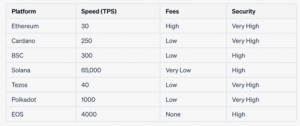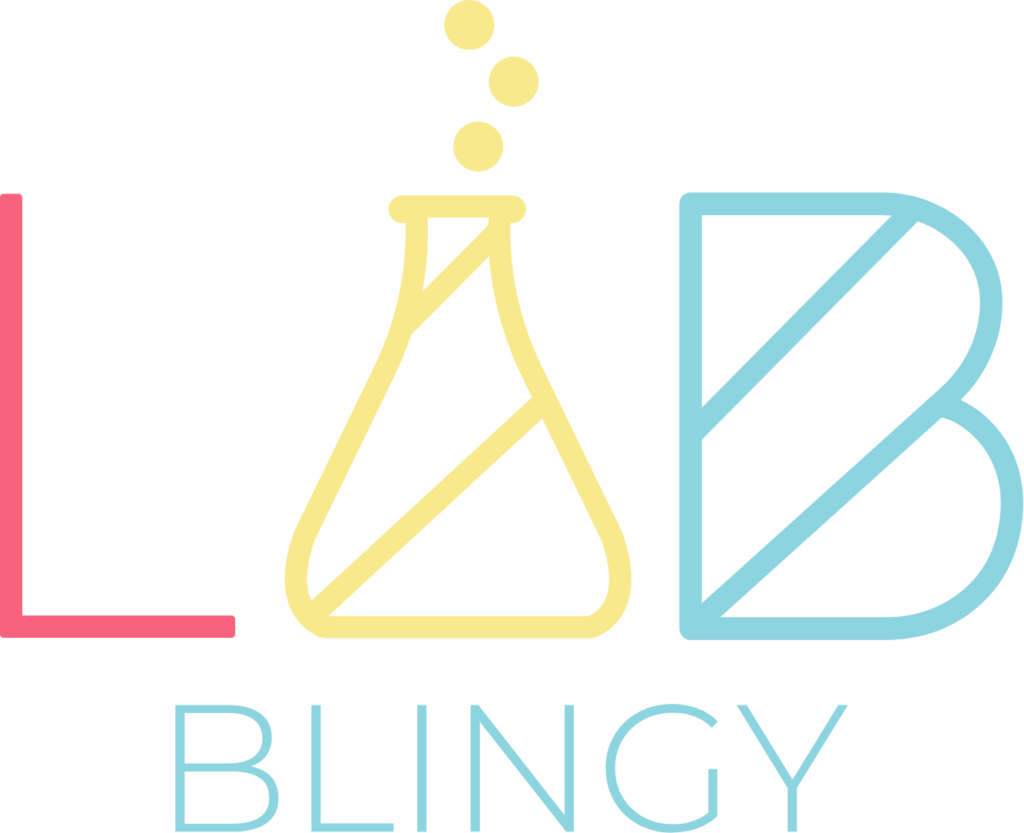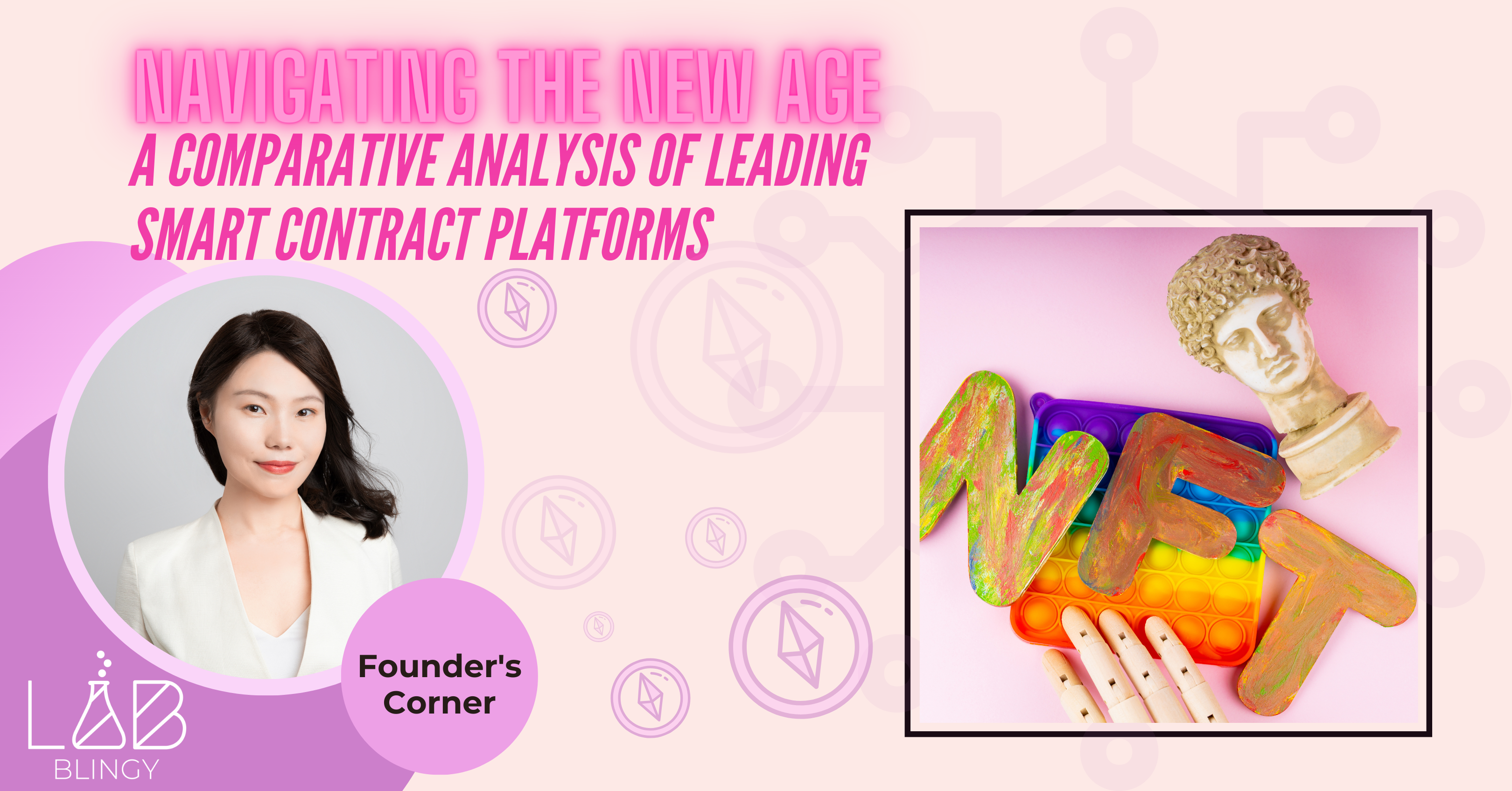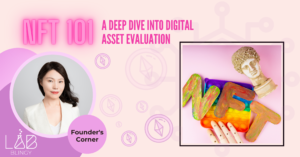In the sprawling world of blockchain technology, smart contract platforms stand as pivotal players. These platforms serve as the foundation for decentralized applications (dApps), allowing users to create and deploy smart contracts that automatically execute predefined actions when certain conditions are met. The beauty of these contracts lies in their trustless, transparent, and immutable nature. They are designed to eliminate the need for intermediaries, offering an array of applications from simple token exchanges to complex decentralized finance (DeFi) protocols. In essence, smart contract platforms are the engines powering the new, decentralized digital economy.
Brief Overview of What Smart Contracts Are
At their core, smart contracts are self-executing contracts with the terms of the agreement directly written into lines of code. They are like traditional contracts but are automated and encoded on a blockchain. This unique characteristic ensures that actions are executed automatically and irrevocably once conditions are met. For instance, in a simple smart contract for a property sale, once the agreed price is sent to the contract, the ownership of the property would be automatically transferred to the buyer. These contracts are secure, tamper-proof, and transparent, making them a revolutionary tool for automating complex processes in various industries.
The landscape of smart contract platforms is rich and rapidly evolving. With Ethereum serving as the pioneering force in this space, a host of new platforms—such as Cardano, Binance Smart Chain, Solana, and others—have emerged, each with its unique architecture and value propositions. For developers, enterprises, and individual users, the question becomes: Which platform is most suitable for my needs? Each has its strengths and weaknesses, and each is tailored to specific use cases and developer preferences. As the blockchain space matures and becomes increasingly competitive, a detailed, objective comparison of these platforms is invaluable. It enables stakeholders to make informed decisions based on key factors such as security, scalability, cost, and developer experience.
The Evolution of Smart Contract Platforms
Introduced by cryptographer Nick Szabo in 1994, smart contracts were envisioned as self-executing agreements with terms coded directly into software and hardware. Szabo’s idea, revolutionary for its time, predates blockchain, but found its perfect match with this technology’s immutable and decentralized nature, which allows these contracts to flourish by enabling transparent, trustless transactions without intermediaries. The game-changer arrived in 2015 with Ethereum, created by Vitalik Buterin and team. As a general-purpose blockchain, Ethereum introduced Solidity, a Turing-complete language that brought smart contracts into reality, giving developers a powerful tool to build decentralized applications (dApps). This innovation transformed Ethereum into the world’s leading smart contract platform, and its vision of a ‘World Computer’ has set the standard that continues to inspire subsequent blockchain projects.
The Emergence of Competitors
While Ethereum’s pioneering status and success have been remarkable, it hasn’t been without challenges, including scalability issues and high gas fees during network congestion. These hurdles have paved the way for formidable competitors. Launched in 2017 by Ethereum co-founder Charles Hoskinson, Cardano aspires to become the world’s financial operating system, emphasizing a research-driven, layered approach. Binance Smart Chain (BSC), introduced in 2020 by leading cryptocurrency exchange Binance, aims to provide a high-performance environment for dApps. Solana, also launched in 2020, stands out for its speed and low fees, utilizing a unique transaction ordering method to enhance throughput. Additionally, platforms like Polkadot, Cosmos, and Tezos are emerging with unique solutions for scalability, interoperability, and security. The smart contract landscape, once largely dominated by Ethereum, is evolving into a vibrant, competitive arena as these platforms work diligently to meet the diverse needs of the decentralized world.
Let’s dive into the intricate world of leading smart contract platforms, exploring their histories, architectures, strengths, and weaknesses. Here I aim to provide a comprehensive guide that sheds light on the unique offerings of each platform and helps readers navigate the complex, yet exciting, terrain of smart contract technology.
Ethereum – The Pioneer
Ethereum, launched in 2015, is widely regarded as the pioneer of smart contract platforms. Conceived by Vitalik Buterin and a team of developers, it was designed as a general-purpose blockchain, with its own native cryptocurrency, Ether (ETH). Ethereum introduced Solidity, a Turing-complete programming language that allows developers to create decentralized applications (dApps) and smart contracts that run on its blockchain.
Strengths:
- Maturity and Adoption: Being one of the first of its kind, Ethereum has the largest community of developers and the most dApps.
- Security and Decentralization: Ethereum has maintained a strong security track record and is highly decentralized.
Weaknesses:
- Scalability Issues: Ethereum’s network can get congested under heavy usage, leading to high transaction fees.
- Energy Consumption: Its Proof-of-Work (PoW) consensus mechanism is energy-intensive.
Recent Upgrades (E.g., Ethereum 2.0)
To address its challenges, Ethereum is transitioning to Ethereum 2.0—a major upgrade moving from a PoW to a Proof-of-Stake (PoS) consensus mechanism. This shift is expected to significantly reduce energy consumption and increase transaction throughput, marking a significant step toward solving its scalability issues.
Cardano – A Scientific Approach
Cardano, launched in 2017 by Ethereum co-founder Charles Hoskinson, is designed to be a more secure and scalable blockchain and aims to be the world’s financial operating system. Unlike other blockchains, Cardano is being built through peer-reviewed research, making it one of the first blockchains to be developed from a scientific philosophy.
Strengths:
- Research-Driven Approach: Cardano’s methodical, academic approach aims to ensure robustness and security.
- Scalability and Efficiency: Cardano’s Ouroboros PoS protocol is designed to scale efficiently without compromising security.
Weaknesses:
- Slow Development: Due to its research-driven approach, Cardano’s development can be slower than other, more agile projects.
- Network Adoption: Cardano has been criticized for having fewer dApps and overall network usage compared to its competitors.
Research-Driven Development Strategy
Cardano sets itself apart with its commitment to a scientific and research-driven approach. Every part of Cardano’s development process involves extensive peer review by academics and scientists, which, while time-consuming, aims to produce a more secure and stable blockchain platform. This approach is intended to prevent issues that have plagued other blockchains and to create a solid foundation for large-scale, institutional adoption.
Binance Smart Chain – The Challenger
Binance Smart Chain, launched in September 2020, is a blockchain network designed to run decentralized applications (dApps) and smart contracts. Developed by Binance, the world’s largest cryptocurrency exchange, BSC runs in parallel with Binance’s original chain, Binance Chain, and aims to provide a high-performance, low-cost alternative to Ethereum.
Strengths:
- Low Transaction Fees: BSC is known for its minimal transaction costs, making it attractive for developers and users alike.
- High Throughput: BSC boasts shorter block times, which allows for quicker transaction confirmation.
Weaknesses:
- Centralization Concerns: Being closely tied to Binance, BSC faces criticism for having a higher degree of centralization than some of its competitors.
- Security Concerns: BSC has suffered from a number of security incidents and exploits, raising questions about its security model.
Comparison with Ethereum
BSC is often viewed as a direct competitor to Ethereum due to its Ethereum-compatible smart contracts and lower fees. While Ethereum has the advantage in terms of decentralization, security, and developer community, BSC has positioned itself as a more user-friendly and cost-effective alternative, especially during periods of high congestion on the Ethereum network.
Solana – The High Performance Contender
Solana, launched in 2020, is a high-performance blockchain platform designed to provide scalable and secure decentralized apps and crypto projects. It’s known for its incredible speed and low fees and aims to provide the underlying blockchain infrastructure for the future of decentralized applications.
Strengths:
- High Throughput: Solana’s unique architecture allows for fast transaction processing without sacrificing decentralization.
- Low Fees: The platform’s efficiency translates to low transaction fees, a compelling feature for both developers and users.
Weaknesses:
- New and Less Tested: As a newer blockchain, Solana doesn’t have the same length of security track record as more established competitors.
- Complex Architecture: Solana’s unique approach might represent a steeper learning curve for developers new to the platform.
Unique Consensus Algorithm
Solana uses a unique consensus algorithm called Proof of History (PoH), combined with a traditional Proof of Stake (PoS) mechanism. PoH allows Solana to create a historical record that proves that an event has occurred at a specific moment in time. This is fundamentally different from other blockchains and is key to Solana’s ability to scale efficiently while maintaining high security and throughput.
Other Notable Platforms
Tezos: Tezos is a self-amending blockchain platform that can upgrade itself without hard forks. It is known for its on-chain governance and focus on formal verification, which aims to increase the security and correctness of its smart contracts.
Strengths:
- Self-amending protocol facilitates upgrades without network splits
- Strong emphasis on security and formal verification
Weaknesses:
- Slower pace of development compared to other blockchains
- Has experienced governance-related controversies
Polkadot:Polkadot aims to enable different blockchains to transfer messages and value in a trust-free fashion. Its relay chain allows for interoperability between a variety of networks.
Strengths:
- Strong focus on interoperability between blockchains
- Scalable multi-chain architecture
Weaknesses:
- Still in relatively early development
- Complex architecture can be a barrier for new developers
EOS: EOS is designed to support large-scale applications. It has eliminated transaction fees and can conduct thousands of transactions per second.
Strengths:
- High throughput and scalability
- No transaction fees for end users
Weaknesses:
- Centralization concerns due to its delegated Proof-of-Stake consensus model
- Past security vulnerabilities and issues
To paint a clearer picture of how these various smart contract platforms stack up against one another, let’s take a detailed look at a comparison of their key features—specifically focusing on transaction speed (measured in transactions per second, or TPS), fees, and security measures:

- For DeFi applications, Ethereum remains a strong choice due to its mature ecosystem, but high gas fees may deter some users and developers.
- For high-throughput applications, Solana is currently the standout with its unique Proof of History consensus.
- Cardano, with its research-driven approach, might be a favorable option for projects that prioritize formal verification and security.
Breakthroughs in Smart Contract Design and Security
Smart contracts, being self-executing contracts with the terms directly written into code, can be vulnerable to a range of security issues such as re-entrancy attacks, overflow and underflow issues, and more. Errors or vulnerabilities in a smart contract can lead to significant financial losses, given the immutable nature of blockchains.
To combat these security issues, developers are adopting a variety of best practices and solutions, such as:
- Formal Verification: This mathematical approach proves the correctness of the code, ensuring it behaves as expected.
- Security Audits: Regular and thorough reviews of smart contract code by security experts.
- Using Established Libraries: Instead of writing contract code from scratch, developers can use thoroughly-tested smart contract libraries, like OpenZeppelin.
New smart contract programming languages, like Vyper (a more secure and readable alternative to Solidity), and new standards and protocols are continuously being developed. One notable breakthrough is the use of Zero-Knowledge Proofs in smart contracts, which allow for privacy-preserving contracts. Another is the rise of Decentralized Finance (DeFi) applications that use smart contracts to recreate traditional financial instruments in a decentralized manner.
Future Prospects and Developments
As the blockchain landscape continues to evolve, we can anticipate significant upgrades and developments across all major smart contract platforms. Ethereum is pushing forward with its Ethereum 2.0 upgrade, while newcomers like Cardano and Solana have their own ambitious roadmaps to enhance scalability and functionality. Binance Smart Chain continues to leverage its connections with the world’s largest cryptocurrency exchange, Binance, to foster a vibrant ecosystem of decentralized applications.
Furthermore, we should keep an eye on emerging players that could potentially disrupt the current dynamics, such as Algorand and Avalanche. As these platforms strive to carve out their unique niches, they will likely introduce innovative features tailored to specific use cases, which will be integral in determining which platform becomes the go-to choice for developers and users alike. This fiercely competitive environment, fueled by the drive for innovation, will be the crucible in which the future of decentralized applications and smart contracts is forged.
Key Takeaways
- There is no one-size-fits-all solution in the world of smart contract platforms.
- The landscape is becoming increasingly competitive, with various platforms offering unique strengths and weaknesses.
- The right platform for a project will depend on a variety of factors, including security needs, desired transaction speed and fees, and the development community and tools available.
- The world of smart contract platforms is dynamic and ever-evolving. As technology continues to advance, we can expect to see new innovations and improvements that will continue to push the boundaries of what is possible with blockchain technology.
Continue reading my blog every Wednesday and discover the latest #insights in blockchain and web3 with me!
Here I listed some potential sources that you can use for a deep dive into the Smart Contract topic:
- Buterin, Vitalik. (2016). “Ethereum White Paper: A Next-Generation Smart Contract and Decentralized Application Platform.” Ethereum Foundation.
- Hoskinson, Charles. (2018). “Why We Are Building Cardano.” IOHK Blog.
- Mazières, David. (2020). “The Stellar Consensus Protocol: A Federated Model for Internet-level Consensus.” Solana Labs.
- Binance Research Team. (2020). “Binance Smart Chain: A Parallel Blockchain to Enable Smart Contracts for Binance Chain.” Binance.
- Merkle, Ralph. (1997). “Smart Contracts: The Next Generation of Legal Contracts?” Harvard Journal of Law & Technology, 10(2), 15-40.
- Wood, Gavin. (2021). “Polkadot: Vision for a Heterogeneous Multi-Chain Framework.” Polkadot Network.
- Tezos Foundation. (2019). “Tezos Whitepaper.” Tezos.
- Atzei, Nicola, Bartoletti, Massimo, & Cimoli, Tiziana. (2017). “A Survey of Attacks on Ethereum Smart Contracts.” Principles of Security and Trust.
- Schwartz, David, Youngs, Noah, & Britto, Arthur. (2018). “The Ripple Protocol Consensus Algorithm.” Ripple Labs Inc.
- Nakamura, Emi. (2022). “Blockchain Scalability: Challenges and Future Prospects.” Journal of Cryptocurrency and Blockchain Technology, 4(1), 35-50.
- Ethereum Foundation. (2021). “Ethereum 2.0 Development Update.” Ethereum Foundation Blog.
- He, Z., Dixon, M., & Mavridou, A. (2023). “Enhancing Smart Contract Security: Current Challenges and Emerging Solutions.” IEEE Transactions on Blockchain and Cryptocurrency.
- Ali, M. S., McCorry, P., Hicks, M., & Meiklejohn, S. (2020). “Smart Contract Upgrades: The Good, The Bad, and The Ugly.” Cryptology ePrint Archive.








